calsfoundation@cals.org
Orphanages
Churches and various fraternal and charitable organizations were the first to take on the burden of providing orphans with care and a home in Arkansas. Many large and small orphanages operated around the state in the nineteenth and twentieth centuries, providing homes for hundreds of children without families, as well as other services. Shifting practices in the latter half of the twentieth century resulted in the creation of a foster care system. This system was seen as preferable to long-term institutional housing, although several such institutions still exist in twenty-first-century Arkansas.
Many orphanages have operated throughout Arkansas since its establishment as a state, and most began with funding from religious groups. One of the first well-known examples was the Arkansas Baptist Orphan’s Home, founded in Monticello (Drew County) in 1896 on land donated by Hannah Hyatt, who became the home’s first matron. It continues to operate in the twenty-first century as the Arkansas Baptist Home in Monticello, with about seventy-five residents housed in cottages, as well as about thirty boys at a satellite home known as the Boys Ranch. In addition to housing children, the facility helps foster the development of healthy family units by providing daycare, counseling, and other services.
What later became a children’s home in the Methodist Family Health system was incorporated in Little Rock (Pulaski County) in 1899 as the Arkansas Methodist Orphanage of the Methodist Episcopal Church, South. It originally served only as a home for children arriving on orphan trains or otherwise orphaned in Arkansas. From the 1850s to the end of the 1920s, thousands of homeless or orphaned children were relocated across the country on orphan trains from eastern cities to states such as Arkansas. At the beginning of the twenty-first century, the United Methodist Children’s Home, Inc., served more than 120 youths at eight community-based therapeutic group homes.
The Texarkana Baptist Orphanage, known in the twenty-first century as Texarkana Baptist Children’s Home, became active in 1908 with financing from Arkansas Missionary Baptists. The institution was originally located in downtown Texarkana (Miller County) but moved twice due to fire and other issues. St. Joseph’s Home, a Roman Catholic institution in North Little Rock (Pulaski County), was built in 1910 and served as a home for orphaned Arkansans for over fifty years.
In 1912, the Arkansas Children’s Home Society was established in Little Rock in an effort to assist in the housing and adoption process in the state. In 1929, it was renamed the Arkansas Children’s Home and Hospital, and this organization ceased its services as an orphanage and became the Arkansas Children’s Hospital in 1954. The Interstate Orphanage in Hot Springs (Garland County), which dates its founding to 1910, continues to operate in the twenty-first century as the Ouachita Children’s Center.
The Arkansas Council for Children and Youth, the state’s first group to advocate for orphans in the political sphere, was formed in the 1940s to assess the institutional funding needs of children throughout the state. In 1948, there were twenty-five child-caring institutions in Arkansas. Some 1,000 children received care in these institutions, which housed anywhere from about six to more than 100 children. By 1967, for instance, St. Joseph’s Home had as many as 119 children at one time. At this time, the state managed the cases but did not provide funds or housing for the orphans. Without state funding, many of these homes had waiting lists.
Following World War II, orphanages were going beyond their means to maintain facilities and provide for more orphans than they were equipped to handle. It was a system with no evaluation procedures and no governmental assistance. As a response to this lack of funding and oversight, the Arkansas General Assembly proposed legislation to provide state support, although changes were not implemented until the 1970s. The Department of Social and Rehabilitation Services, which became the Arkansas Department of Human Services (ADHS), was created by Act 38 of 1971 to integrate various state agencies into a functional whole. This was the first legislative act in the state to provide care and regulation of care to Arkansas’s orphans and children in need.
In the late twentieth century, as ADHS began to involve itself financially in the care of children, the foster care system became prevalent in Arkansas. ADHS uses the foster care system for temporary placement in order to alleviate the burden placed on private group homes. Ideally, the system provides a healthy home and community experience for a displaced child.
The need for institutions for children dwindled as Arkansans brought orphans into their homes as foster children, and this transition away from institutional care brought about changes for many orphanages and children’s homes. In the twenty-first century, most children’s homes are short-term residences for those slated to enter the state’s foster care system, such as the Children’s Emergency Center in Fort Smith (Sebastian County). However, several institutions offering long-term housing and care for children continue to operate, though their services are often for children who have been abused and neglected. For example, the Ouachita Children’s Center in Hot Springs serves primarily homeless and runaway youths. Institutions that provide residential services also offer counseling and other support services.
Today, many institutions that previously housed orphans now serve to transition children into the foster care system or through the adoption process. Because the foster care system itself does not facilitate traditional adoption, many organizations that previously functioned as group homes provide counseling and other services for foster care, traditional adoption, and other services facilitated by ADHS.
For additional information:
Children’s Emergency Center. http://childrensemergencyshelter.org/ (accessed January 9, 2022).
Creason, Katherine B. “The Hot Springs Children’s Home and One Devoted Worker.” The Record 6 (1965): 78-84.
Hanley, Steven G. “Arkansas Children’s Hospital: A Century of Milestones.” Arkansas Democrat Gazette, March 4, 2012, p 112.
———. A Place of Care, Love and Hope—A History of Arkansas Children’s Hospital. Little Rock: August House, 1994.
“Interstate Orphanage.” National Register of Historic Places nomination form. On file at Arkansas Historic Preservation Program, Little Rock, Arkansas. Online at https://www.arkansasheritage.com/arkansas-historic-preservation-program (accessed January 9, 2022).
“St. Joseph’s Home.” National Register of Historic Places nomination form. On file at Arkansas Historic Preservation Program, Little Rock, Arkansas. Online at https://www.arkansasheritage.com/arkansas-historic-preservation-program (accessed January 9, 2022).
Texarkana Baptist Orphanage Trustees. Texarkana Baptist Orphanage (Because We Care). Texarkana, TX: 1994.
Danielle Butler
Little Rock, Arkansas
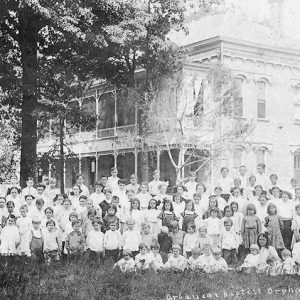 Arkansas Baptist Orphanage
Arkansas Baptist Orphanage 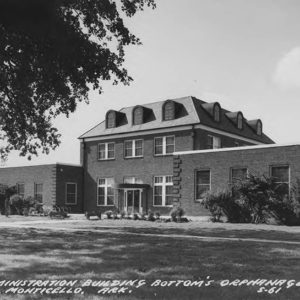 Bottom's Orphange
Bottom's Orphange 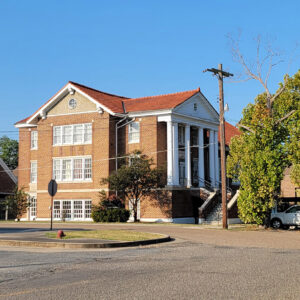 Dana's House
Dana's House  Day Nursery
Day Nursery 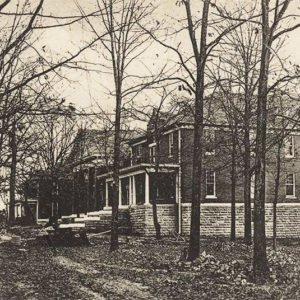 Masonic Orphans Home
Masonic Orphans Home 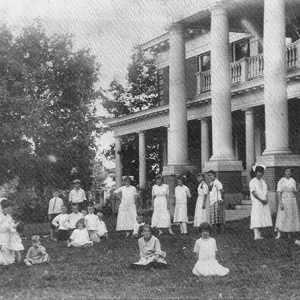 Methodist Children's Home
Methodist Children's Home  Methodist Orphanage
Methodist Orphanage  Methodist Orphanage
Methodist Orphanage  St. Joseph's Home
St. Joseph's Home  Texarkana Baptist Orphanage
Texarkana Baptist Orphanage  Vera Lloyd Services' Original Williamson Hall
Vera Lloyd Services' Original Williamson Hall 




Comments
No comments on this entry yet.